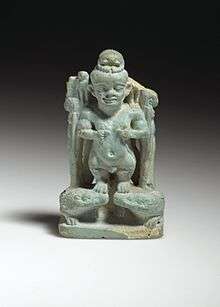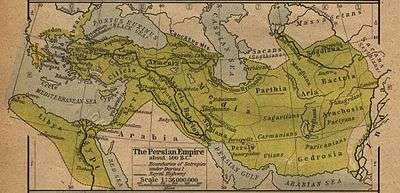Late Period of ancient Egypt
| Late Period of ancient Egypt | ||||||||||||
| ||||||||||||
 The Egyptian Kingdom within the Neo-Assyrian Empire in 671 BC. | ||||||||||||
| Capital | Sais, Mendes, Sebennytos | |||||||||||
| Languages | Ancient Egyptian | |||||||||||
| Religion | Ancient Egyptian religion | |||||||||||
| Government | Monarchy | |||||||||||
| History | ||||||||||||
| • | Established | c. 664 BC | ||||||||||
| • | Disestablished | c. 332 BC | ||||||||||
| ||||||||||||
| Today part of | | |||||||||||
Part of a series on the |
||||||||||||||||||
|---|---|---|---|---|---|---|---|---|---|---|---|---|---|---|---|---|---|---|
| History of Egypt | ||||||||||||||||||
 | ||||||||||||||||||
|
||||||||||||||||||
|
||||||||||||||||||
|
||||||||||||||||||
|
||||||||||||||||||
|
||||||||||||||||||
|
||||||||||||||||||
|
| ||||||||||||||||||
The Late Period of ancient Egypt refers to the last flowering of native Egyptian rulers after the Third Intermediate Period from the 26th Saite Dynasty into Achaemenid Persian conquests and ended with the conquest by Alexander the Great and establishment of the Ptolemaic Kingdom. It ran from 664 BC until 332 BC.
Libyans and Persians alternated rule with native Egyptians, but traditional conventions continued in the arts.[1]:16
It is often regarded as the last gasp of a once great culture, during which the power of Egypt steadily diminished.
26th Dynasty
The Twenty-Sixth Dynasty, also known as the Saite Dynasty after Sais, reigned from 672 BC to 525 BC. Canal construction from the Nile to the Red Sea began.
One major contribution from the Late Period of ancient Egypt was the Brooklyn Papyrus. This was a medical papyrus with a collection of medical and magical remedies for victims of snakebites based on snake type or symptoms.[1]:55

Artwork during this time was representative of animal cults and animal mummies. This image shows the god Pataikos wearing a scarab beetle on his head, supporting two human-headed birds on his shoulders, holding a snake in each hand, and standing atop crocodiles.[1]:16

27th Dynasty
The First Achaemenid Period (525–404 BC) period saw Egypt conquered by an expansive Achaemenid Empire under Cambyses.
The initial period of Achaemenid Persian occupation when Egypt (Old Persian: 𐎸𐎭𐎼𐎠𐎹 Mudrāya) became a satrapy, known today as the Twenty-seventh Dynasty of Egypt.
28th–30th Dynasties
The Twenty-Eighth Dynasty consisted of a single king, Amyrtaeus, prince of Sais, who rebelled against the Persians. He left no monuments with his name. This dynasty reigned for six years, from 404 BC to 398 BC.
The Twenty-Ninth Dynasty ruled from Mendes, for the period from 398 BC to 380 BC.
The Thirtieth Dynasty took their art style from the Twenty-Sixth Dynasty. A series of three pharaohs ruled from 380 BC until their final defeat in 343 BC led to the re-occupation by the Persians. The final ruler of this dynasty, and the final native ruler of Egypt until nearly 2,300 years later, was Nectanebo II.
31st Dynasty
There was a Second Achaemenid Period of the Thirty-First Dynasty (343–332 BC).
References
Sources
- Roberto B. Gozzoli: The Writing of History in Ancient Egypt During the First Millennium BCE (ca. 1070-180 BCE). Trend and Perspectives, London 2006, ISBN 0-9550256-3-X
- Lloyd, Alan B. 2000. "The Oxford History of Ancient Egypt, edited by Ian Shaw". Oxford and New York: Oxford University Press. 369-394
- Quirke, Stephen. 1996 "Who were the Pharaohs?", New York: Dover Publications. 71-74
- Primary sources
- Herodotus (Histories)
- Fragments of Ctesias (Persica)
- Thucydides (History of the Peloponnesian War)
- Diodorus Siculus (Bibliotheca historica)
- Fragments of Manetho (Aegyptiaca)
- Flavius Josephus (Antiquities of the Jews)
